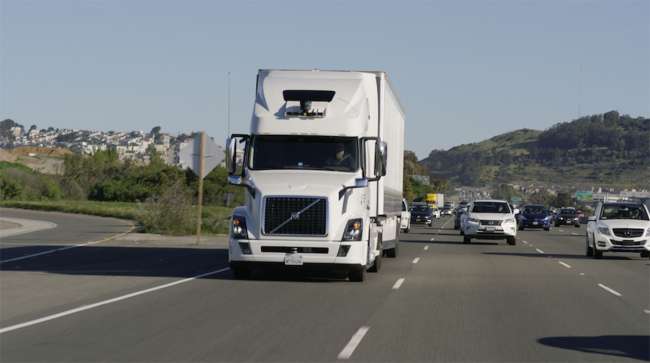In Break From Otto, Uber Upgrades Lidar to Third-Party, Off-the-Shelf System

Uber has upgraded its trucks to its Advanced Technologies Group (ATG) technology stack, and they are driving on freeways around San Francisco.
Uber’s ATG self-driving truck project started in 2016 with the addition of the team from Otto, Uber ATG Trucks Product Manager Alden Woodrow told Transport Topics via e-mail June 30. "Since then, we’ve been working hard to combine the best of Otto and ATG technology for both cars and trucks. With that upgrade, we’ve retired the Otto name and integrated all of our self-driving efforts into Uber ATG."
The integration with ATG has allowed Uber’s trucks to make even faster progress, Woodrow said. The technology is “completely refreshed,” with new hardware sensors and new software throughout.
“The loadout [installed equipment] includes upgraded components and software throughout the vehicle in addition to a new 64-channel spinning lidar [light radar] that we’ve purchased from a third party,” he added. “The new system builds on ATG’s years of work on self-driving technology and provides a leading technology platform to launch and scale a safe, reliable, real commercial product.
The Otto system did not use a lidar system on its trucks.
“The lidar significantly improves what data the truck is able to capture, building a high-quality point cloud of its surroundings,” Woodrow said.
Back in October, Uber made news when it snagged a Guinness World Record for the successful transportation of some Anheuser-Busch beer via a self-driving vehicle, the longest continuous journey by a driverless and autonomous semitrailer truck, at just under 132 miles. “The record was issued to Ottomotto, our authorized motor carrier, and Matt Grigsby, the safety monitor in the truck’s sleeper berth,” Woodrow said.




